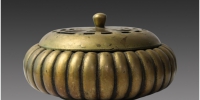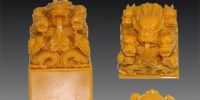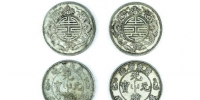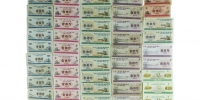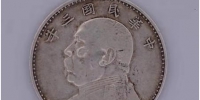山西益昌升精品推荐严华经—碑拓
山西益昌升精品推荐严华经—碑拓
2019迪拜精品推荐严华经—碑拓
藏品名称:严华经—碑拓
藏品规格:41.6X103cm
交易方式:迪拜布洛克国际拍卖有限公司
藏品简介:碑拓(读音:bēi tà):是南朝时出现的一种印刷技术,是中华民族传统文化的代表。在印刷术没有诞生之前,古代遗存下来的文字有不少是在石头上记下来的。碑拓是将碑版上的文字或图像,用宣纸紧覆在碑版上,用墨打拓其文字或图形,然后将纸揭下,纸上留下碑版上的文字或图形。碑拓有"乌金拓"、"蝉翼拓"、"朱拓"等多种形式。碑拓有着悠久的历史。它的出现为雕版印刷术的产生提供了条件。碑拓承载着文化发展的重要使命,对于研究历史文献、文物、书画有着重要的研究价值,是历史发展的一个重要佐证。
2019 Dubai boutique recommendation Yanhua Jing-Beitou
Collection name: Yan Hua Jing-Bei Tuo
Collection specification: 41.6X103cm
Mode of transaction: Dubai Bullock International auction Co., Ltd.
Collection introduction: tablet Tuo (pronunciation: B ≤ I t à): it is a printing technology that appeared in the Southern Dynasty and is the representative of the traditional culture of the Chinese nation. Before printing was born, many of the ancient remains were written down on stones. The inscription is to cover the text or image on the tablet with Xuan paper, to expand its text or figure with ink, and then to remove the paper and leave the text or figure on the tablet. There are many forms of tablet topology, such as "Wujin Tuo", "cicada wing extension", "Zhu Tuo" and so on. Beituo has a long history. Its appearance provides the condition for the production of engraving printing. Steles bear the important mission of cultural development, which has important research value for the study of historical documents, cultural relics, calligraphy and painting, and is an important evidence of historical development.
在印刷术没有诞生之前,古代遗存下来的文字有不少是在石头上记下来的。据记载,大约在春秋的时候,就有人想出来把文字刻在石头上了。战国初年的古书《墨子》中讲怎样保存文字记录的时候,就提到要刻在金石上面。“金”指的是青铜器,“石”指的就是石头。唐朝贞观初,人们在陕西宝鸡附近的陈仓发现了10个石鼓,上面的刻字记载着公元前8世纪时秦文公的事情。这是迄今为止,年代最久的“石头记”了。石鼓较小,刻不了多少字,看起来也比较麻烦,后来人们就把字刻到大石碑上去了。
Before the birth of printing, many ancient texts were written down on stones. It is recorded that in the Spring and Autumn Period, some people came up with the idea of inscribing words on stones. When Mozi, an ancient book in the early Warring States Period, talked about how to preserve the written records, it mentioned that it should be carved on the stones. "Gold" refers to bronze and "stone" refers to stone. At the beginning of Zhenguan in the Tang Dynasty, ten stone drums were found in Chen Cang near Baoji, Shaanxi Province. The inscriptions on them recorded the events of Qin Wengong in the 8th century BC. This is by far the oldest "Stone Story". Stone drums are small, they can't engrave many words, and they seem troublesome. Later, people engraved the characters on the big stone tablets.
东汉末年,虽然已经发明了纸,但印刷术还没发明。为了避免手抄书错误频发,汉灵帝熹平四年,即公元175年,蔡邕向汉灵帝建议:把一些儒家经典刻在石碑上,作为校正经书文字的标准本。灵帝同意后,蔡邕亲自书写,刻好后的石碑一块块立在首都洛阳的太学门外。这些石碑就是历史上著名的“熹平石经”,如今还有一些残块保存在西安的碑林里。
In the late Eastern Han Dynasty, although paper had been invented, printing had not yet been invented. In order to avoid the frequent mistakes in handwritten books, Emperor Xiping of Han Ling suggested to Emperor Han Ling in 175 that some Confucian classics should be inscribed on stone tablets as standard texts for correcting scriptures. With the consent of the Lingdi Emperor, Cai Yong wrote and carved stone tablets stood outside the university gate of Luoyang, the capital. These stone tablets are the famous "Xi Ping Shi Jing" in history, and now there are still some remains in the stele forest of Xi'an.
用纸墨拓取石刻上的文字,以载籍为据始于梁、隋,若以实物为据则始于唐初,经宋元明清历代之发展,迄今已1400余年。拓本作为碑刻传承的载体,具有多方面的价值:承载了古代灿烂的书法艺术,且为历代学人所取法,备受世人的重视;历代石刻所使用的各种书体,反映着一脉相承的汉字在不同时期的演变,本身就是一部直观的中国文字发展史;秦汉刻石、隋唐碑刻、宋元明清法帖一经刊刻,对考订史实,研究文字源流与艺术价值、了解古代风土人情、文章诗翰等都是十分珍贵的原始资料。
The use of paper and ink to extract inscriptions on stone carvings began in Liang and Sui Dynasties on the basis of books, and in Tang Dynasty on the basis of material objects. It has been more than 1400 years since the development of Song, Yuan, Ming and Qing dynasties. Rubbing, as the carrier of stele inscription inheritance, has many values: it bears the splendid ancient calligraphy art, and has been taken by scholars of all dynasties, which attracts the attention of the world; the various styles used in stone inscriptions of all dynasties reflect the evolution of Chinese characters in different periods, which is an intuitive development of Chinese characters. History; Qin and Han stone inscriptions, Sui and Tang stele inscriptions, Song, Yuan, Ming and Qing Dynasties, once inscribed, are precious raw materials for textual research of historical facts, study of the origin and artistic value of writing, understanding of ancient customs, poetry and handwriting.
黄伯思《跋刘宽碑》一文中说:"因令工椎拓二碑及阴文,装为三帙"。此时出现了"椎拓"这个词语。椎者,用木椎打纸入碑字;拓者,是用毡包在纸上擦墨。椎与拓都是打碑的工序,而椎的目的是为了拓,拓本这个名词便由此而成立。
In Huang Bosi's "Ba Liu Kuan Bei", he said, "Gongzhi Tuo's two tablets and their inscriptions are decorated with three silks". At this time, the word "Zhituo" appeared. Vertebrates are typed into inscriptions with wooden vertebrae, and rubbers are used to rub ink on paper wrapped in felt. Vertebra and rubbing are the process of stele making, and the purpose of the vertebra is to rubbing, thus the term rubbing was established.
欢迎致电山西益昌文化艺术有限公司升市场部:400-016-6675




